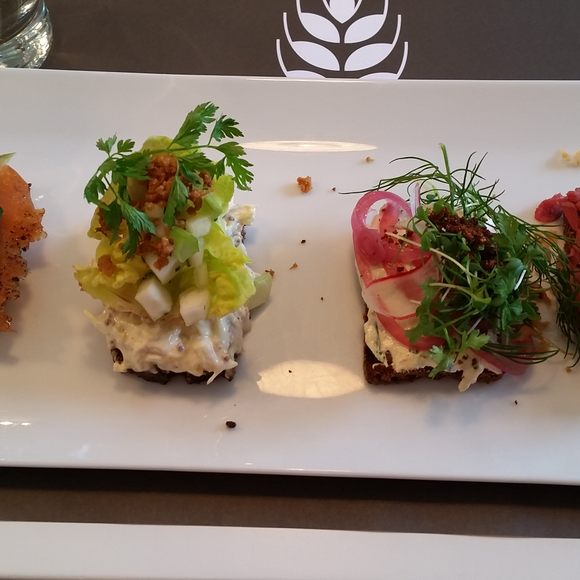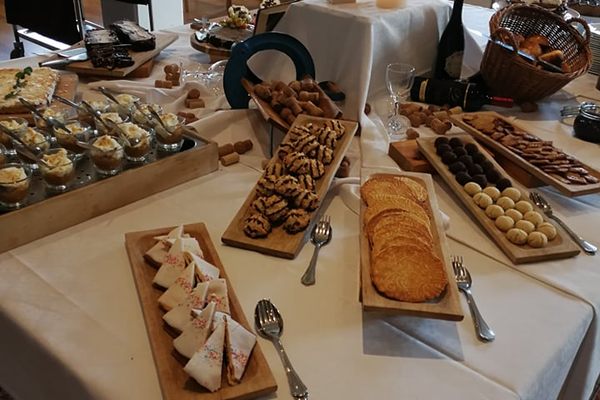For those who prefer their sandwich-innards on display, the Danish smørrebrød offers the ideal exhibitionist lunch option.
The open-faced smørrebrød typically begins with a sturdy piece of sourdough-rye bread (rugbrød) that has been slathered with a protective layer of butter. Traditional smørrebrød feasts start with Danish-style pickled herring sprinkled with crunchy red onions and aromatic dill fronds. The tacitly codified smørrebrød eating progression demands that fish (and shrimp) sandwiches always precede meat-topped versions. In the case of the latter, a favorite presentation is roast beef with cornichons and a dollop of Danish remoulade (a combination of pickles, mayonnaise, lemon, herbs, and spices such as curry or mustard seed). Finally, cheese smørrebrød (Danes prefer their pungent blues) may be enjoyed with fruits, toasted nuts, or greens such as fennel.
Derived from the Danish words meaning “butter” and “bread,” smørrebrød comes out of a utilitarian past. Historically, the flat sturdy pieces of rugbrød served as plates upon which to pile prepared foods, which were often recombinations of the previous day’s leftovers. But today’s offerings are so elaborate that proper eaters use a knife and fork to more thoughtfully enjoy the artfully assembled edible.
For a traditional pairing, begin a smørrebrød lunch with a cold shot of akvavit. The combination of strong booze and butter-coated bread can warm the coldest Denmark-dweller during the long, dark days of Scandinavian winter.
Where to Try It
-
Slotskaelderen Hos Gitte Kik
Fortunstræde 4, Copenhagen, 1065, Denmark















